Pencil to the Plough is now exhibiting at Johnston Central Library Events space...See statement by Mark St.John Ellis and imagery within.
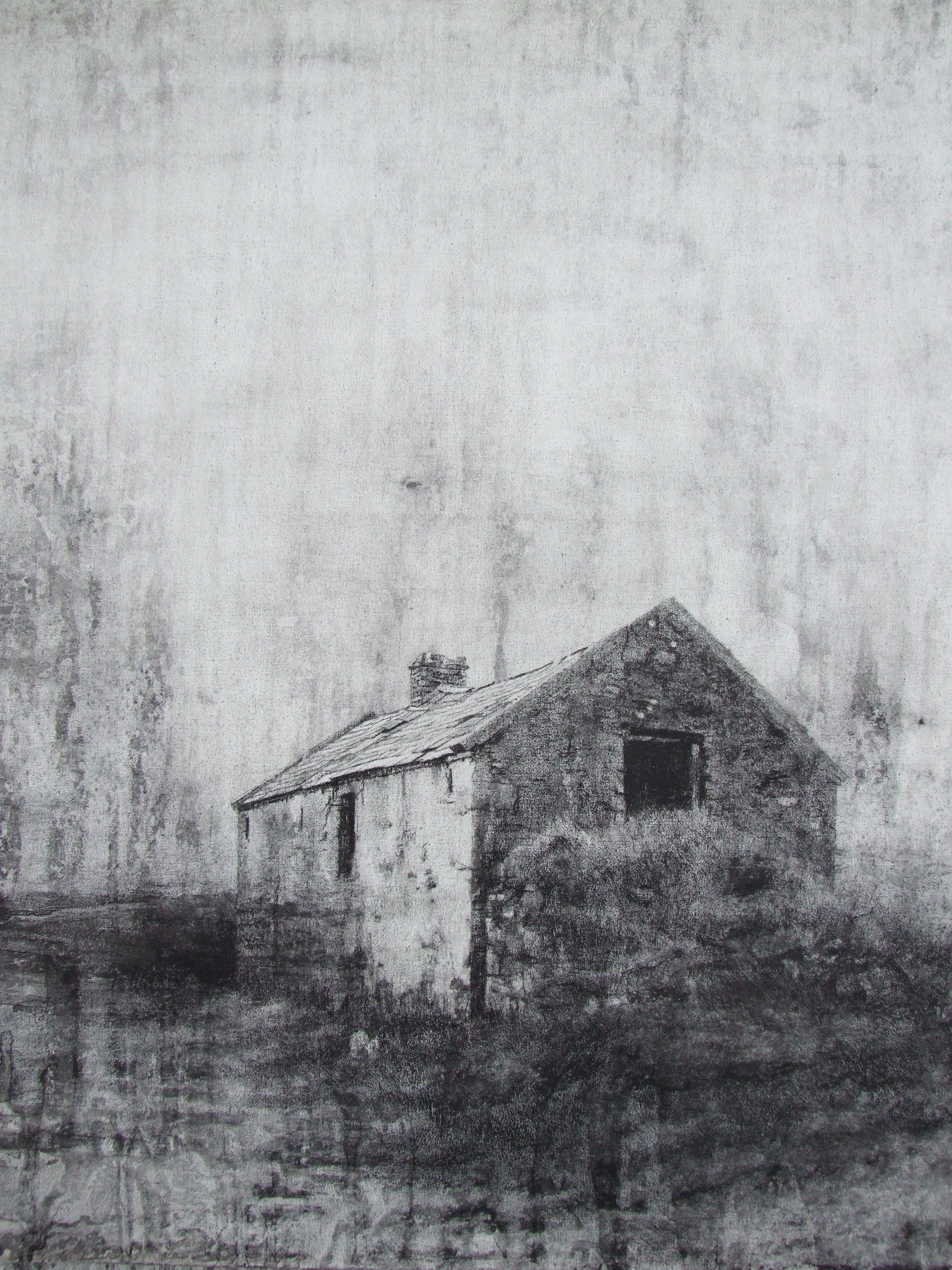
Two Academy members discussing what is the correct procedure to execute a drawing: one Academy member states it is only by a graphite pencil line, the other Academy member argues the line can be drawn by a plough in a field.
Drawing is the oldest visual means of communicating events. Tools made from graphite were used fifteen thousand years before Christ. Historically drawing has been regarded as the initial study and preparation towards the painting and has therefore been regarded as secondary to painting. It has been thought of as the beginning of the development process. It could be suggested that the twentieth century changed that when artists used drawing on a far larger scale with a whole range of mediums. The drawings carved into the rock surfaces of sites dating five thousand years ago could be used as arguments against that statement.
This exhibition will engage with the subject by exhibiting works that demonstrate the diversity and the debate on what drawing is. This will range from the endorsement of the traditional by an Academy, alongside drawing driven by a more conceptual contemporary art practice and all that lies between the pencil and the plough.
The first two drawings aim to encapsulate the traditional with the contemporary mark making. In 2007 during the Venice Biennale, Marco, a street artist who sat outside the Academy in Venice turning out classical drawings of typical Venetian scenes in approximately ten minutes for twenty five euros, demonstrated an excellent technique in charcoal. The drawing beside this, Rossanrubble Study 1, is by Joanna Kidney from 2002 which in a traditional sense is how artists recorded an image as quickly as possible for future reference. In a modern setting this would have been regarded as an abstraction of a landscape and in a contemporary approach is seen as mark making. This is the sort of image that generally produces the remark that a child could have done it. To point out the inacurracy of that statement there follows a series of drawings from 2010 by Elizabeth Ellis who at the time was two and a half.
Following this section are drawings by two artists who combine, both in medium and execution, the past with the present. Michael Wann approaches his work both from the traditional and the contemporary. Conceptually these drawings of 2011 are about loss and memory, worked in charcoal with the random marking of water on the canvas. Miriam de Burca concentrates in these drawings from 2010 on the exquisite graphite line with a subject that is about the corruption in nature by drawing weeds and the delicate fragility of dead moths. Both are distanced from the traditional landscape or still life but acknowledge its history.
The last part of the exhibition is about the process in drawing. John Beattie is interested in how far one can go in executing a line either physically or through the use of aparatus both mechnical and with human control. The two examples from The Artist Studio Series: Long Distance Drawing ( McNaughtons Tree ) 2007 / 2008, are a photograph where John watches a monitor in a box over his head, holding a pole with a camera on the end where a ball point pen is also connected whilst drawing a tree onto canvas board. The second is the drawing itself. The drawings of Anthony Lyttle from 2011 predominantly concentrate on movement through recurring marks and patterns where there is no single point of focus. The time consuming physical process marking the paper is an important part in the making of this work. The repetition of the same mark creates a kind of rhythmic energy through the repetitive action, which determines the resulting image.
Mark St.John Ellis
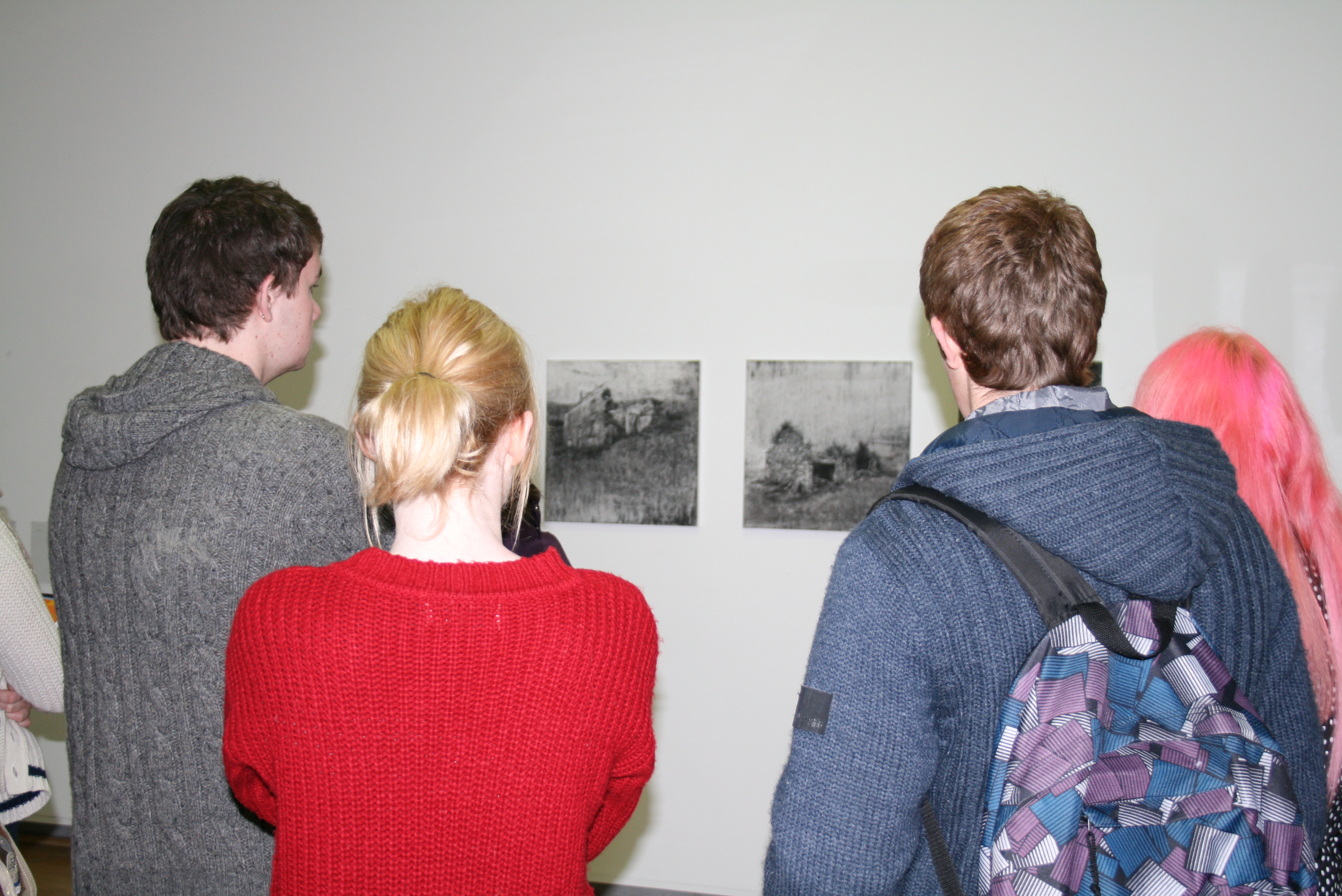
Students from Cavan Institute
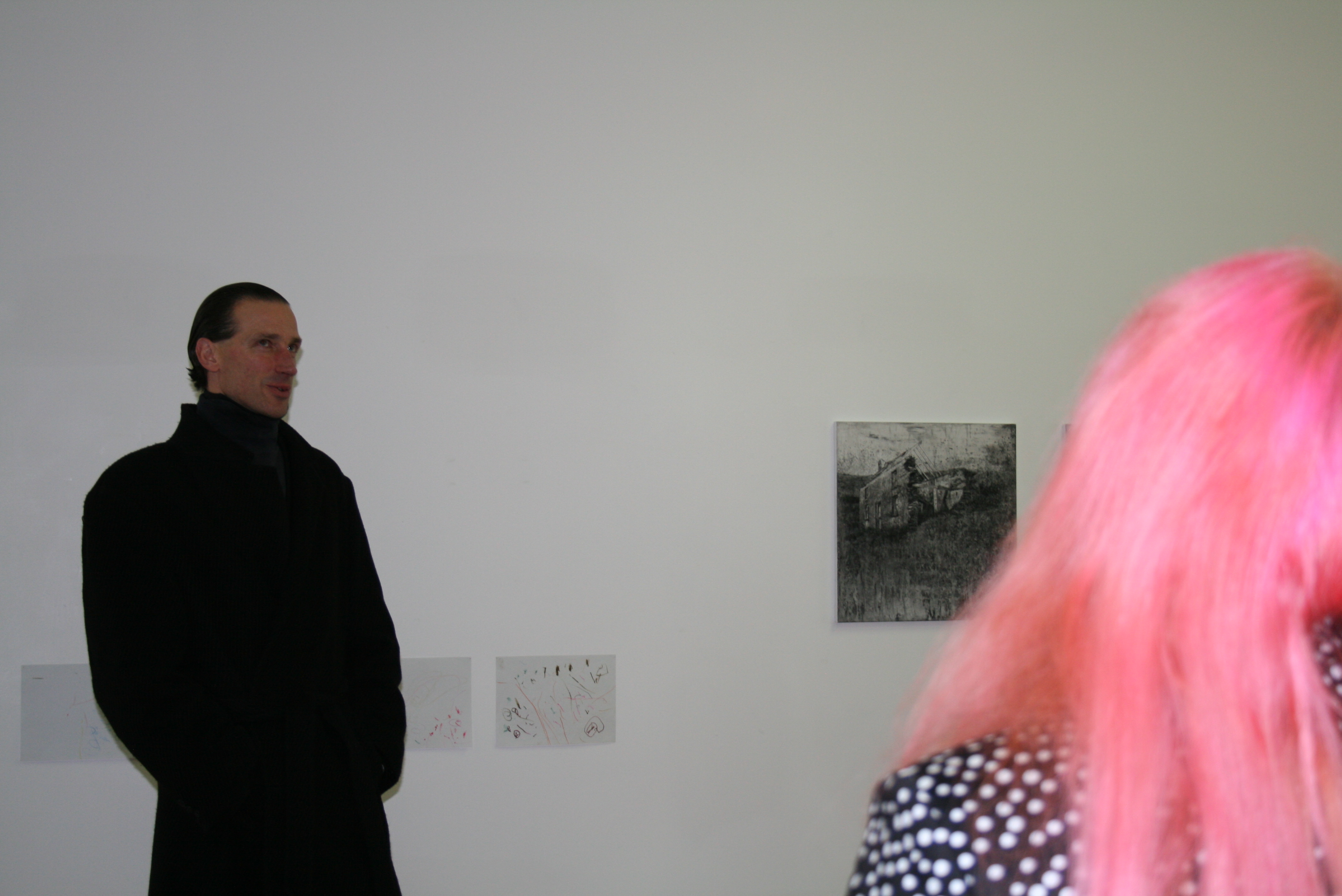
Mark St.John Ellis presentation to students
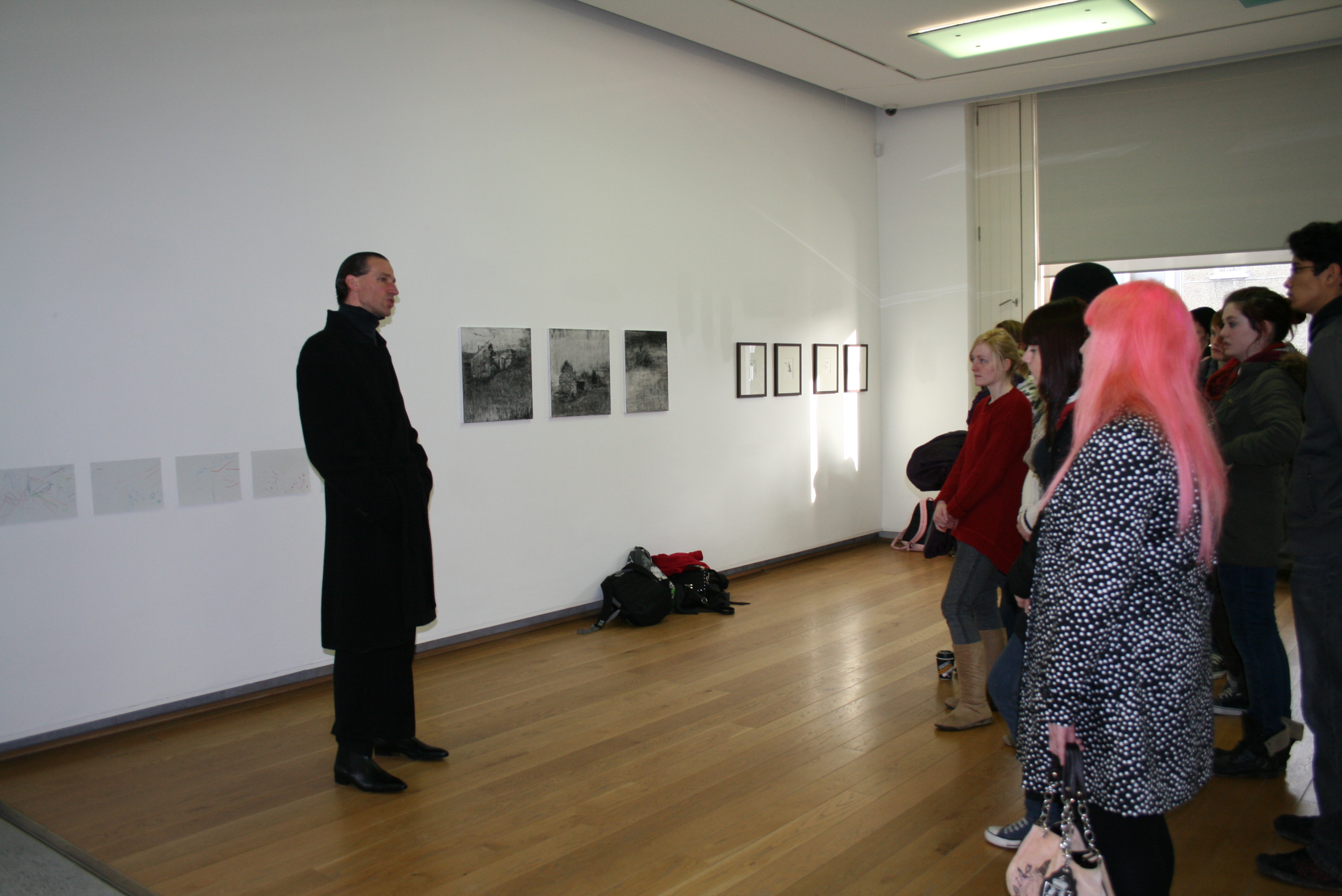
Mark St. John Ellis, Curator - Pencil to the Plough
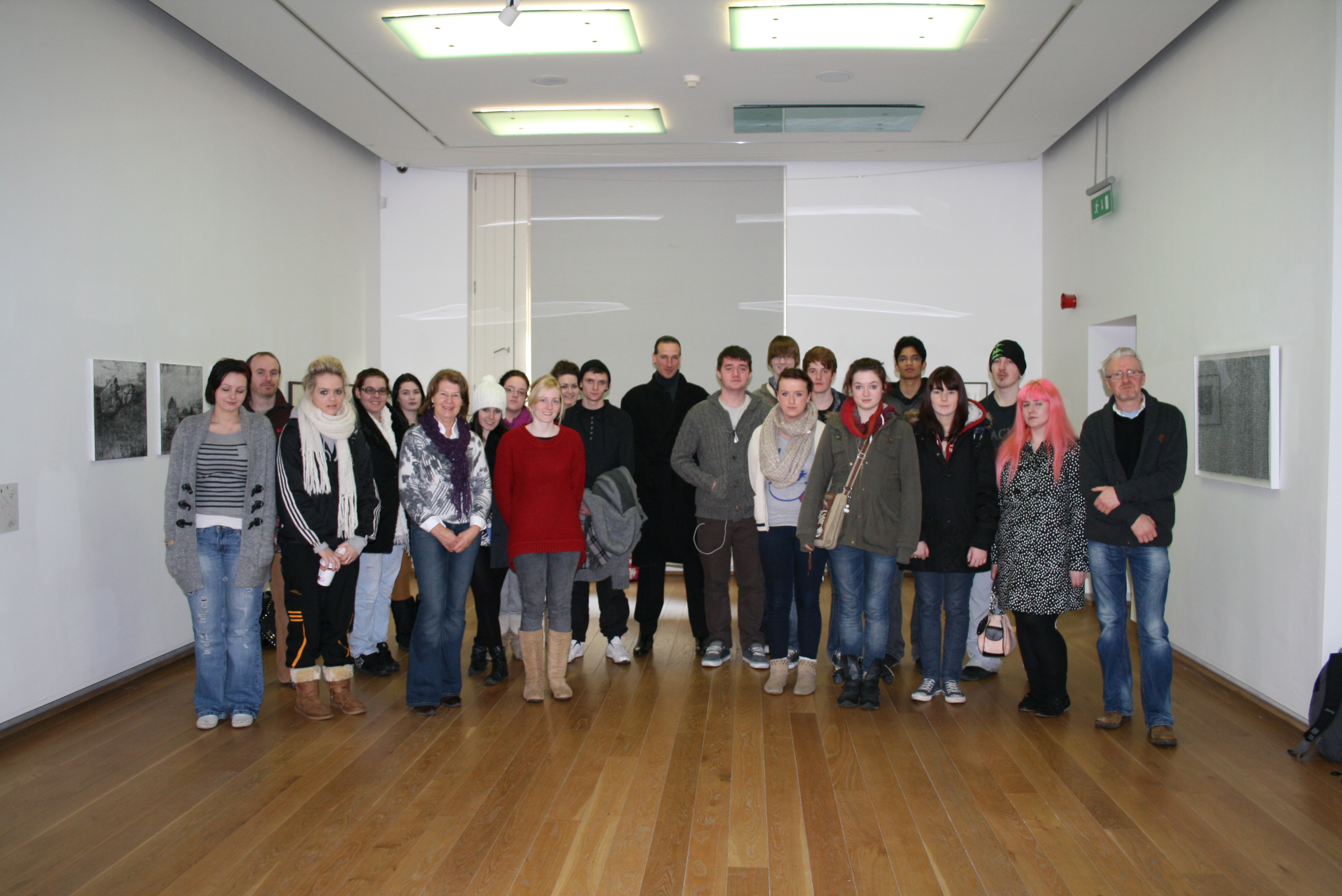
Edwin Lynch, Mark St.John Ellis and the Art Class of Cavan Institute